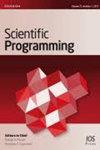Generative Deep Learning for Visual Animation in Landscapes Design
4区 计算机科学
Q3 Computer Science
引用次数: 0
Abstract
The biggest challenge for architecture designers is the time required for the design process. Especially landscape architects who have different work limits from architects in general. In contrast to architects in general, who are assisted in producing design plans by building standards, building requirements, and space programs that adapt to the type of project being undertaken. At the same time, some design jobs demand high-productivity landscape animation presentation in a short time. The long process involved in designing animation often makes it difficult for designers to produce optimal work. This study proposes generative zooming animation with artificial intelligence support to shorten the designer’s work process and energy optimization. Deep learning with Vector Quantized Generative Adversarial Network and Contrastive Language-Image Pre-Training was used to generate alternative landscape designs from text prompt-based and compile them in animation. Our experiment shows that one frame can be generated roughly in 3.636 ± 0.089 s, which is significantly faster than the conventional method to create animation. Moreover, our method is able to achieve a good-quality image, which scored 3.2904 using inception score evaluation. The effectiveness of deep learning in visual landscape and animation creation can help designers speed up the design process. Furthermore, working time efficiency without compromising design quality will increase designer productivity and economic growth.景观设计中视觉动画的生成式深度学习
对于建筑设计师来说,最大的挑战是设计过程所需的时间。尤其是景观设计师,他们的工作限制与一般的建筑师不同。与一般的建筑师不同的是,他们在设计方案的时候会得到建筑标准、建筑要求和空间规划的帮助,以适应正在进行的项目类型。同时,一些设计工作要求在短时间内呈现高生产率的景观动画。设计动画的漫长过程往往使设计师很难做出最佳的作品。本研究提出了人工智能支持下的生成式缩放动画,以缩短设计师的工作流程和优化精力。利用向量量化生成对抗网络和对比语言图像预训练的深度学习,从文本提示生成替代景观设计,并将其编译成动画。实验表明,生成一帧动画的时间大致为3.636±0.089 s,比传统的动画生成方法要快得多。此外,我们的方法能够获得质量较好的图像,通过初始评分评估,该图像的得分为3.2904。深度学习在视觉景观和动画创作中的有效性可以帮助设计师加快设计过程。此外,在不影响设计质量的情况下提高工作时间效率将提高设计师的生产力和经济增长。
本文章由计算机程序翻译,如有差异,请以英文原文为准。
求助全文
约1分钟内获得全文
求助全文
来源期刊

Scientific Programming
工程技术-计算机:软件工程
自引率
0.00%
发文量
1059
审稿时长
>12 weeks
期刊介绍:
Scientific Programming is a peer-reviewed, open access journal that provides a meeting ground for research results in, and practical experience with, software engineering environments, tools, languages, and models of computation aimed specifically at supporting scientific and engineering computing.
The journal publishes papers on language, compiler, and programming environment issues for scientific computing. Of particular interest are contributions to programming and software engineering for grid computing, high performance computing, processing very large data sets, supercomputing, visualization, and parallel computing. All languages used in scientific programming as well as scientific programming libraries are within the scope of the journal.
 求助内容:
求助内容: 应助结果提醒方式:
应助结果提醒方式:


